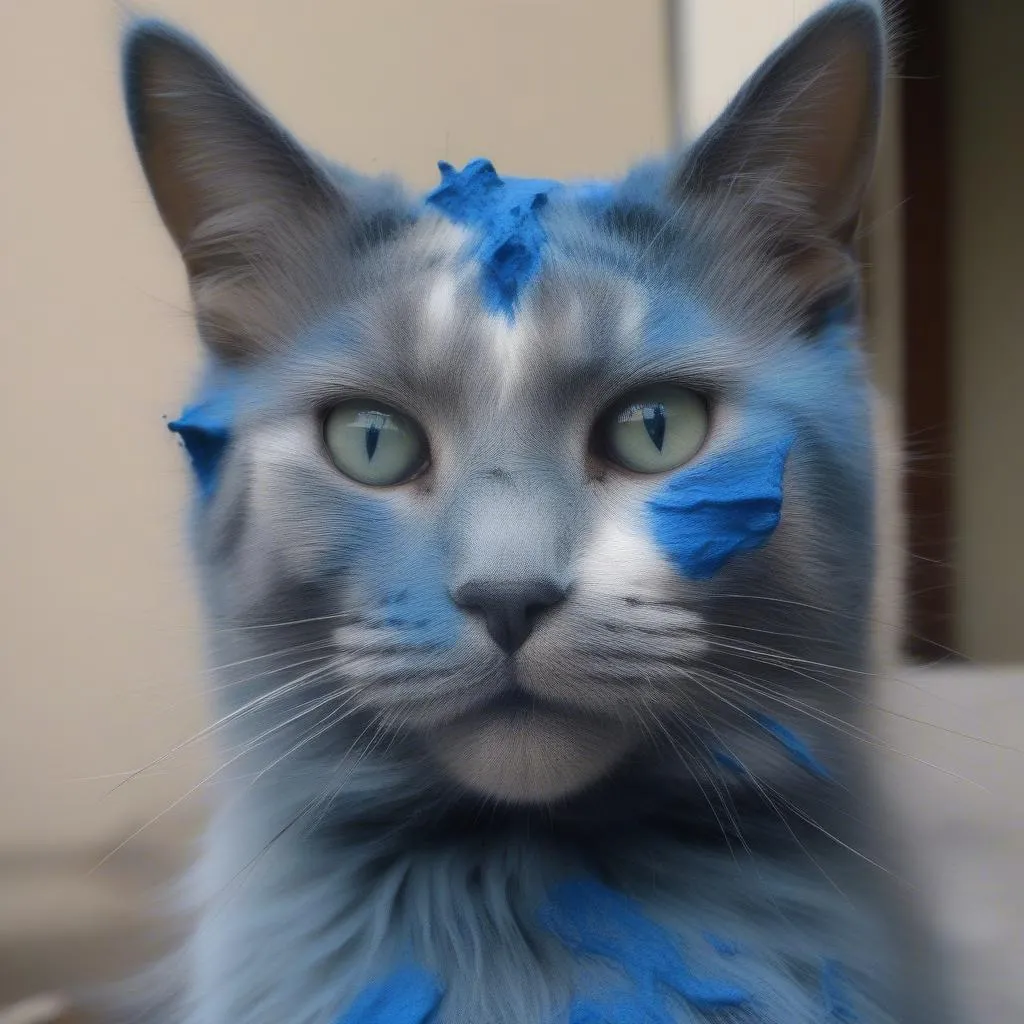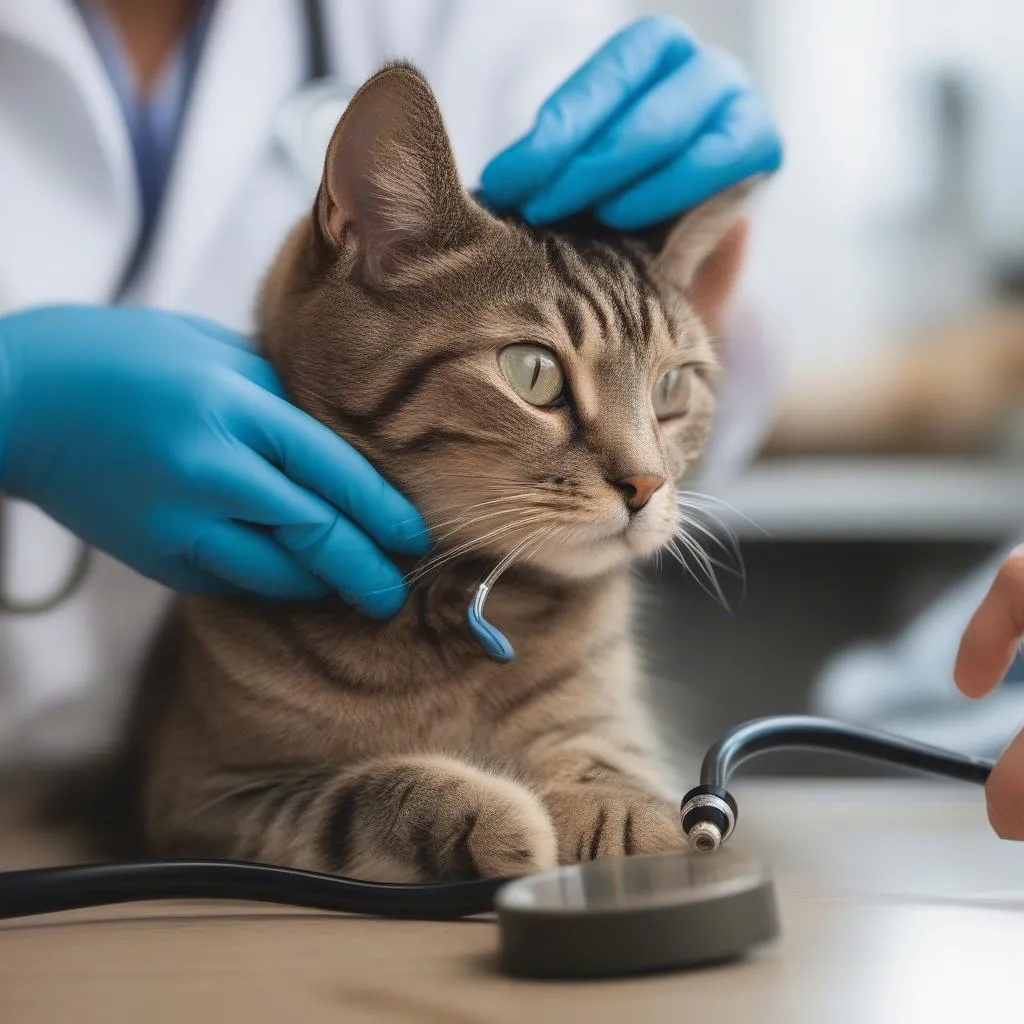So, you’ve found yourself in a sticky situation. Your feline friend got a little too close to some anti-theft paint, and now you’re wondering how to get it off without hurting your furry companion. Don’t worry, we’ve got you covered.
This guide will walk you through safe and effective methods to remove anti-theft paint from your cat’s fur.
Understanding the Problem: Why is Anti-theft Paint on Cats Tricky?
Anti-theft paint is designed to be incredibly difficult to remove, often staining surfaces and clinging stubbornly. This can be problematic when it comes to our feline friends. Cats are meticulous groomers, and ingesting this paint can be harmful. Plus, no one wants a stained kitty!
Spotting the Signs: Is it Really Anti-theft Paint?
Before you panic, make sure it’s actually anti-theft paint. Look for these telltale signs:
- Bright, unusual color: Anti-theft paints are often vibrant pinks, greens, or blues, designed to be noticeable.
- Thick, sticky consistency: The paint may feel gummy or tacky to the touch.
- Strong, unpleasant odor: Anti-theft paint often has a pungent smell.
Gearing Up: What You’ll Need for a Safe Removal
- Rubber gloves
- Mild dish soap
- Warm water
- Soft cloths or paper towels
- Vegetable oil or petroleum jelly (if the paint is dry)
- Patience (lots of it!)
Step-by-Step Guide: Safely Removing Anti-theft Paint from Your Cat
- Stay Calm: Your cat will pick up on your stress, so take a deep breath and remain calm.
- Assess the situation: How much paint is on your cat? Where is it located?
- Protect yourself: Put on your gloves to avoid getting paint on your skin.
- If the paint is wet: Immediately rinse the affected area with warm water.
- If the paint is dry: Gently massage vegetable oil or petroleum jelly into the paint to soften it.
- Lather up: Apply a small amount of mild dish soap to the affected area and work it into a lather with warm water.
- Rinse thoroughly: Rinse the area well with warm water, ensuring no soap residue remains.
- Dry gently: Pat your cat dry with a soft cloth or paper towel.
FAQs: Addressing Your Concerns
Q: My cat is licking the paint! What should I do?
A: Preventing your cat from licking the paint is crucial. If home remedies aren’t working, consider a protective cone collar. Contact your vet immediately if you suspect your cat has ingested any paint.
Q: What if the paint is on a sensitive area like my cat’s face?
A: Avoid getting any soap or water in your cat’s eyes, nose, or mouth. Use a damp cloth to carefully clean around these areas. If you’re unsure, consult your veterinarian for guidance.
Q: Can I use nail polish remover or other chemicals?
A: Absolutely not! These products are toxic to cats and can cause serious health problems. Stick to the gentle methods outlined above.
Q: I’m having trouble removing the paint myself. What are my options?
A: Don’t hesitate to contact your vet or a professional groomer for assistance. They have experience handling these situations and can safely remove the paint.
 cat covered in paint
cat covered in paint
Q: Are there any devices that can help diagnose issues like paint ingestion in cats?
A: While no device can diagnose paint ingestion directly, tools like Cardiagtech’s OBD2 scanners can help veterinarians monitor vital signs and identify any potential complications arising from such incidents. Remember, consulting a vet should always be your first step if your cat ingests any foreign substance.
 veterinarian checking cat with stethoscope
veterinarian checking cat with stethoscope
Conclusion: Your Cat’s Safety Comes First
Remember, patience and a gentle touch are key when dealing with anti-theft paint on your cat. If you’re ever in doubt, always err on the side of caution and consult with your veterinarian. By following these steps, you can help your furry friend return to their clean and paint-free selves.
For further assistance and resources on pet safety, consider connecting with CARDIAGTECH. Their expertise in automotive diagnostics extends to a commitment to the well-being of all passengers, including our four-legged friends!


